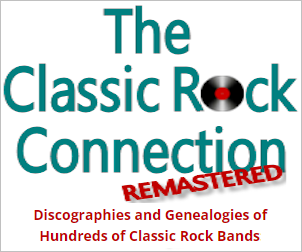Collecting Strategies
When beginning to collect vintage cast iron cookware, there is often a tendency on the part of new hobbyists to want to acquire every piece they encounter. This can lead to a couple of things. One is a smaller bank account. The other is a lot of iron that quickly becomes uninteresting to them.
As new collectors learn more about vintage cast iron, they often discover that Wagner Ware "Made In USA" skillet, that small block logo #3 Griswold, or that Lodge egg logo pan to be pieces they may well have passed by had they come across them later on in their cast iron experience.
The true collector walks away from more pieces than they buy. But it can often be an expensive lesson to learn.
Part of having a successful and rewarding cast iron collection is planning a strategy. Unless your intent is to become a dealer in cast iron, buying every piece you find or buying pieces simply because they're at a bargain price is more akin to hoarding than collecting. (Of course, there is something to be said for refurbishing those bargains and using the profits from their sale to fund your collecting hobby.) But, if your budget has a limit, try instead to think about what it is you like most about vintage cast iron and base your collecting on that.
If the trademarks or qualities of a particular manufacturer are something you find interesting or attractive, think about sticking with that maker, or with that maker's pieces from a particular era in its history. For example, Griswold slant logo or large block logo pieces, or, as difficult as they may be to find, Wagner Ware skillets with the "pie logo". Focus on completing a set comprised of the best examples you can find of each size made of a particular type of pan. Don't be discouraged, however, if there is an ultra-rare size or type of pan. Even if you never find it, you will at least have had the fun of trying.
Another strategy is to focus on a type of cookware. If baking is your thing, gem and muffin pans offer quite a variety of designs, as do waffle irons. If you enjoy dutch oven cooking, think about trying to collect a set of the different sizes produced by your favorite maker. Remember, your hobby is one of the few that, if proper care is exercised, allows you to actually use your collection without diminishing its value.
If you find that your interest is in a broad range of makers, perhaps pick a type of piece and size that you like, and collect that. For example, you could build a collection of only #7 skillets from as many manufacturers and in their various designs as you can find.
Don't have room for a big collection? Consider vintage castiron cookware toys. Made to the same specifications as regular cookware, you can collect skillets, griddles, tea kettles, dutch ovens, and even waffle irons. Be prepared, however, to sometimes spend more on these miniatures than you would on their full size counterparts.
Consider also that you may find it more advantageous to collect pieces by makers other than Griswold and Wagner. While many hobbyists and dealers generally consider those the "gold standard" of collectible cast iron, bear in mind that other manufacturers like Favorite, Martin, and Vollrath made cookware of quality on par with the bigger names, and you may be able to more easily and inexpensively build a collection or put together a set from one or more of them.
If your interest in cast iron leans more towards usability than collectibility, consider pieces from pre-1960 Lodge, Birmingham Stove & Range Co, or unmarked Wagner. Although not attractively marked, they represent some of the finest "user" pieces. The upside here is that there are many to be found, and typically at more-than-reasonable prices.
Having said all that, don't let a strategy get in the way of having fun with your collecting. While "completing the set" can be challenging and rewarding-- complete sets often being valued more highly than their individual pieces-- there's no harm in collecting pieces just because you like them.
Finally, remember that a big part of the fun in collecting is in the searching. Another part is enjoying what you've found. And the last part is passing on your cast iron knowledge, experience, enthusiasm, and, ultimately, your collection to others who have found the hobby as fascinating as you have. As they say, you can't take it with you.








